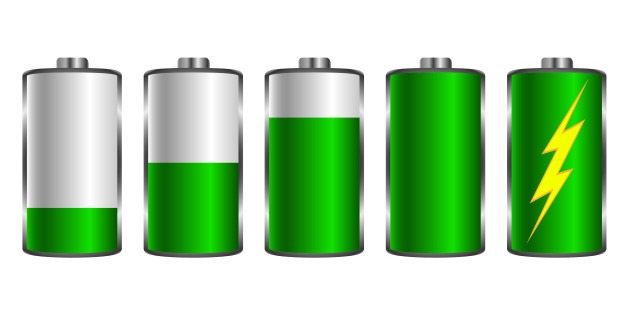
Let’s face it, you’ve picked the mobile operating system you like. Whether you’ve opted for an iPhone, a Lumia handset or a device running Android, the chances are you’re not going to switch allegiances no matter what others may do or say to try to convince you otherwise. At the same time, few people would argue that their handset of choice is perfect.
You’ve picked your side when it comes to OS, but what about the handset itself? Apple, Samsung, HTC et al keep releasing slightly tweaked versions of last year’s handset, perhaps adding a faster processor, a larger screen and more memory. One thing is constantly overlooked, however -- battery life. And it’s time for things to change.
The quoted statistics for any given phone are all but meaningless because it is impossible to take into account the myriad app configurations and usage patterns that exist. In spite of this, there are probably very few smartphone owners (or tablet owners for that matter) who feel their device's charge lasts for long enough. It would be naive to think that phone manufacturers are not heavily invested in advancing battery technology, but worrying about whether a charge will last the day is something that plagues us all.
Consumers are ever-demanding creatures. Bigger, better and faster is always requested, and it seems that battery technology is failing to keep pace. The faster processor, the bigger screen, the more graphic-intensive games suck up battery power greedily. Use your phone for little more than making the odd call and sending texts, and you'll almost certainly make it through the day without an issue, but factor in web browsing and playing the occasional game of Candy Crush and you could probably watch battery percentage dropping before your very eyes.
There is a solution.
At the moment there is too much focus on creating devices that are wafer thin and feather light. Yet the ever-growing market for rechargeable battery packs and cases with built-in backup batteries shows that many people don’t mind carrying around some extra bulk. If you've opted for a charging case such as those from Mophie, would you not prefer that a larger battery was just built into the phone by default? If you're carrying around a battery pack and a USB cable, would it not be easier if your phone's battery was of a higher capacity to start with?
Of course, it's not quite that simple. Fatten up the iPhone 7 or Galaxy S7 with a bigger battery and -- despite complaints about needing more juice -- there would almost certainly be protests from people unhappy at the extra weight and bulk. So why not make a larger battery optional. Apple has shown that people like a choice of screen sizes, and most manufacturers give consumers a choice of storage capacity. It makes perfect sense to extend this idea of choice to larger capacity batteries.
People who are running few or undemanding apps can opt for regular capacity battery versions of their preferred handset, while those with greater needs could plump for one with a larger battery. It's something that would be made easier and cheaper to achieve if more manufacturers stepped away from the idea of sealed-unit phones with integrated, non-replaceable batteries and made the power pack something that could be easily switched out.
App developers have a part to play as well. There is a lot that can be done to improve the efficiency of apps with code optimization -- too many apps have grown into sprawling, bloated behemoths that need taming. There are also other avenues to investigate such as integrated kinetic charging which could help to keep a battery topped up throughout the day.
Project Ara is an inspiring project from which other manufacturers could borrow ideas. The option of dropping a camera in favor of clipping in a higher capacity battery empowers the customer with choice. The point is that there is much more that could be done to help smartphones make it through the day without needing a charge, even under heavy usage. Now is the time for that more to be done.
Photo credit: Shmizla / Shutterstock
from BetaNews http://feeds.betanews.com/~r/bn/~3/JUlw6U55NUo/
via IFTTT







0 коммент.:
Отправить комментарий